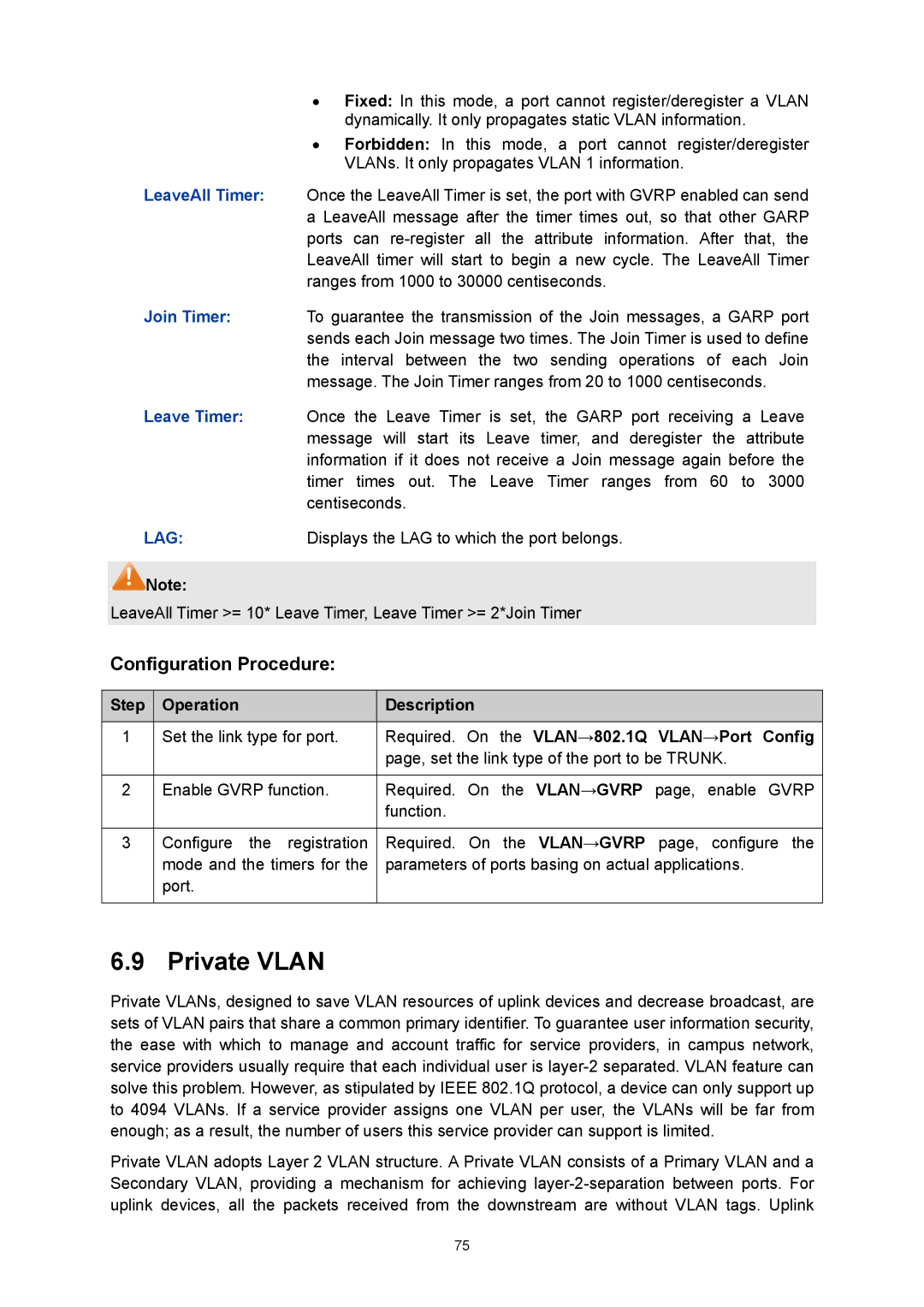
•Fixed: In this mode, a port cannot register/deregister a VLAN dynamically. It only propagates static VLAN information.
•Forbidden: In this mode, a port cannot register/deregister VLANs. It only propagates VLAN 1 information.
LeaveAll Timer: Once the LeaveAll Timer is set, the port with GVRP enabled can send a LeaveAll message after the timer times out, so that other GARP ports can
Join Timer: To guarantee the transmission of the Join messages, a GARP port sends each Join message two times. The Join Timer is used to define the interval between the two sending operations of each Join message. The Join Timer ranges from 20 to 1000 centiseconds.
Leave Timer: Once the Leave Timer is set, the GARP port receiving a Leave message will start its Leave timer, and deregister the attribute information if it does not receive a Join message again before the timer times out. The Leave Timer ranges from 60 to 3000 centiseconds.
LAG: | Displays the LAG to which the port belongs. |
![]() Note:
Note:
LeaveAll Timer >= 10* Leave Timer, Leave Timer >= 2*Join Timer
Configuration Procedure:
Step | Operation | Description |
|
|
|
1 | Set the link type for port. | Required. On the VLAN→802.1Q VLAN→Port Config |
|
| page, set the link type of the port to be TRUNK. |
|
|
|
2 | Enable GVRP function. | Required. On the VLAN→GVRP page, enable GVRP |
|
| function. |
|
|
|
3 | Configure the registration | Required. On the VLAN→GVRP page, configure the |
| mode and the timers for the | parameters of ports basing on actual applications. |
| port. |
|
|
|
|
6.9 Private VLAN
Private VLANs, designed to save VLAN resources of uplink devices and decrease broadcast, are sets of VLAN pairs that share a common primary identifier. To guarantee user information security, the ease with which to manage and account traffic for service providers, in campus network, service providers usually require that each individual user is
Private VLAN adopts Layer 2 VLAN structure. A Private VLAN consists of a Primary VLAN and a Secondary VLAN, providing a mechanism for achieving
75
